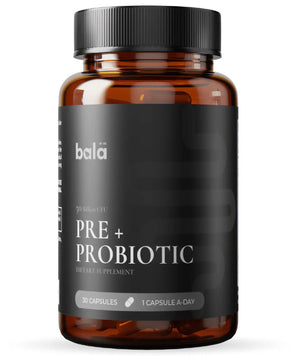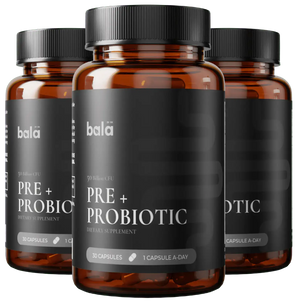Table of Contents
Introduction
Did you know that sushi has been part of Japanese cuisine since as early as the 7th century? Originally, it was a method for preserving fish in fermented rice—a far cry from the vibrant and diverse rolls we enjoy today. For many of us, sushi is a delicious dining experience that evokes thoughts of fresh fish, seaweed, and unique flavor combinations. However, the question remains: Is sushi healthy for weight loss?
With the growing awareness of health and wellness, especially regarding nutritional choices, we often find ourselves pondering the implications of our food. As we navigate through modern diets, sushi has emerged as a popular choice among those seeking healthier options. But what does the science say? How does sushi fit into a balanced diet, particularly for those watching their weight?
In this blog post, we’ll delve into the nutritional components of sushi, its potential health benefits, and some considerations to keep in mind. We will also explore how specific choices can make sushi a viable option for weight loss without sacrificing flavor or enjoyment. At Bala Health, we are committed to empowering our community with science-backed information, so let’s embark on this journey together!
What You Will Learn
- The basic components of sushi and how they contribute to its nutritional profile.
- The health benefits associated with sushi ingredients.
- How sushi can be incorporated into a weight-loss-friendly diet.
- Tips for choosing healthier sushi options.
- Potential drawbacks and considerations for sushi consumption.
By the end of this article, you’ll be equipped with the knowledge to make informed decisions about including sushi in your diet. Let’s dive a little deeper into the world of sushi!
The Basics: What is Sushi?
Sushi is often misunderstood as simply raw fish, but it is much more than that. In essence, sushi refers to vinegared rice paired with various ingredients, including fish, vegetables, and seaweed. There are several types of sushi, each with its unique preparation style and flavors:
- Maki (Rolls): Sushi rolls typically filled with fish, vegetables, or other ingredients and wrapped in seaweed.
- Nigiri: Slices of raw fish or other toppings served over small balls of rice.
- Sashimi: Thinly sliced raw fish served without rice.
- Temaki (Hand Rolls): Cone-shaped sushi filled with various ingredients.
- Uramaki (Inside-Out Rolls): Rolls where the rice is on the outside, like the popular California roll.
Each type of sushi offers its unique taste and texture, making it a diverse dish that can cater to different preferences and dietary needs.
Nutritional Components of Sushi
Understanding what makes sushi nutritious can help clarify its role in a weight-loss plan. Here are the primary components:
1. Fish
Fish is a staple in many sushi dishes and is known for being a high-quality protein source. Common fish options include:
- Salmon: Rich in omega-3 fatty acids, which are beneficial for heart health and may aid in reducing inflammation. Salmon also contains vitamin D, which is essential for bone health.
- Tuna: Another fish high in protein and omega-3s, but it's important to choose varieties low in mercury.
- Mackerel: A fatty fish packed with nutrients, mackerel is another excellent choice.
2. Rice
Sushi rice is typically seasoned with vinegar, sugar, and salt. While white rice is commonly used, some sushi restaurants offer brown rice as an alternative, which is higher in fiber and can contribute to a feeling of fullness.
3. Seaweed (Nori)
Nori is the seaweed used to wrap sushi rolls. It is low in calories and contains essential nutrients like iodine, which supports thyroid function, and various vitamins and minerals.
4. Vegetables
Many sushi rolls include fresh vegetables, which provide fiber, vitamins, and minerals. Common vegetables found in sushi include cucumber, avocado, and carrots.
5. Condiments
Soy sauce, wasabi, and pickled ginger often accompany sushi. While they can enhance flavor, it's essential to be mindful of sodium content—especially in soy sauce.
Health Benefits of Sushi
Sushi can be a healthful addition to your diet, especially when made with high-quality ingredients. Here are some key health benefits to consider:
1. High-Quality Protein
Sushi provides a source of lean protein, which is essential for muscle repair and overall health. Including protein in your meals can help you feel fuller for longer, potentially reducing overall calorie intake.
2. Omega-3 Fatty Acids
Fatty fish like salmon and mackerel are rich in omega-3 fatty acids, which can have positive effects on heart health and may support brain function. Including these fish in your diet can be particularly beneficial.
3. Low in Calories
Many sushi options are relatively low in calories compared to other restaurant meals. A standard sushi roll may contain fewer calories than a typical fast-food meal, making it a better choice for those watching their weight.
4. Rich in Nutrients
Sushi can be packed with essential nutrients, including vitamins A, D, B12, as well as minerals like iodine and selenium. These nutrients are vital for maintaining overall health.
5. Supports Gut Health
The fiber from vegetables and seaweed can aid digestion and promote a healthy gut microbiome. A balanced gut is crucial for overall health and well-being.
Is Sushi Good for Weight Loss?
So, is sushi healthy for weight loss? The short answer is yes, but it depends on the choices you make. Here are some key factors to consider:
Calorie Control
The main principle of weight loss is maintaining a calorie deficit—burning more calories than you consume. Sushi can fit into a weight-loss plan if you choose lower-calorie options and practice portion control. For example, sashimi is generally lower in calories than rolls that contain rice and sauces.
Choosing Wisely
Opt for sushi that is made with fresh fish, vegetables, and minimal added sauces. Avoid deep-fried options and rolls that contain high-calorie ingredients like cream cheese or tempura. Instead, focus on traditional rolls or sashimi that highlight the natural flavors of the ingredients.
Mindful Eating
Pay attention to portion sizes and eat slowly to savor each bite. Mindful eating can help you recognize when you’re full, preventing overeating.
Tips for Choosing Healthier Sushi Options
When dining out or preparing sushi at home, consider these tips to make healthier choices:
- Go for Sashimi or Nigiri: These options are typically lower in calories and high in protein compared to rolls.
- Choose Brown Rice: If available, opt for brown rice for added fiber and nutrients.
- Load Up on Vegetables: Look for rolls that contain plenty of vegetables to increase the fiber content and nutritional value.
- Be Cautious with Sauces: Limit high-calorie sauces like mayonnaise or teriyaki. If you enjoy soy sauce, consider using a low-sodium version.
- Balance Your Meal: Pair your sushi with a side of vegetables or a salad to create a more balanced meal.
Potential Drawbacks of Eating Sushi
While sushi can be a healthy choice, there are some potential drawbacks to be aware of:
1. Mercury Content
Certain fish, such as tuna and swordfish, can contain high levels of mercury. It’s advisable to consume these fish in moderation and choose lower-mercury options, such as salmon and shrimp.
2. Sodium Levels
Soy sauce and certain sushi roll ingredients can be high in sodium. Excessive sodium intake can lead to health issues such as high blood pressure, so it’s important to be mindful of your overall sodium consumption.
3. Risk of Foodborne Illness
Raw fish can carry risks of foodborne illnesses. Ensure that you are eating sushi from reputable places that follow proper food safety guidelines.
Conclusion
Sushi can indeed be a healthy option for weight loss when chosen wisely. With its lean protein, omega-3 fatty acids, and nutrient-rich ingredients, sushi has the potential to contribute positively to a balanced diet. The key is to make informed choices, practice portion control, and incorporate sushi into a broader diet filled with fruits, vegetables, and whole grains.
Are you ready to explore how sushi can fit into your weight-loss journey? We invite you to take our Weight-Loss Quiz to find your personalized gut-health roadmap that aligns with your goals.
And for those looking to support their overall wellness, consider trying our Bala Health Probiotic. Designed to simplify gut health, our clean, functional, science-backed probiotics can help you feel better from the inside out.
Frequently Asked Questions (FAQ)
1. Can I eat sushi every day while trying to lose weight?
While sushi can be part of a weight-loss diet, moderation is key. Incorporate a variety of foods to ensure balanced nutrition.
2. What types of sushi are best for weight loss?
Opt for sashimi, nigiri, or rolls filled with lean protein and lots of vegetables. Avoid deep-fried options and high-calorie sauces.
3. Is sushi safe for pregnant women?
It’s generally advisable for pregnant women to avoid raw fish due to the risk of foodborne illness and mercury exposure. Cooked sushi options or vegetarian rolls are safer choices.
4. How can I enjoy sushi without overindulging?
Practice mindful eating by savoring each bite and being aware of portion sizes. Pair sushi with vegetable sides or salads to create a balanced meal.
5. Does sushi have health benefits beyond weight loss?
Yes! Sushi ingredients like fish, seaweed, and vegetables provide essential nutrients that can support overall health, including heart health and gut health.
By understanding the nutritional profile of sushi and making informed choices, we can enjoy this delightful culinary experience while promoting our health and wellness. Let’s savor every bite and celebrate the journey to better health together!






